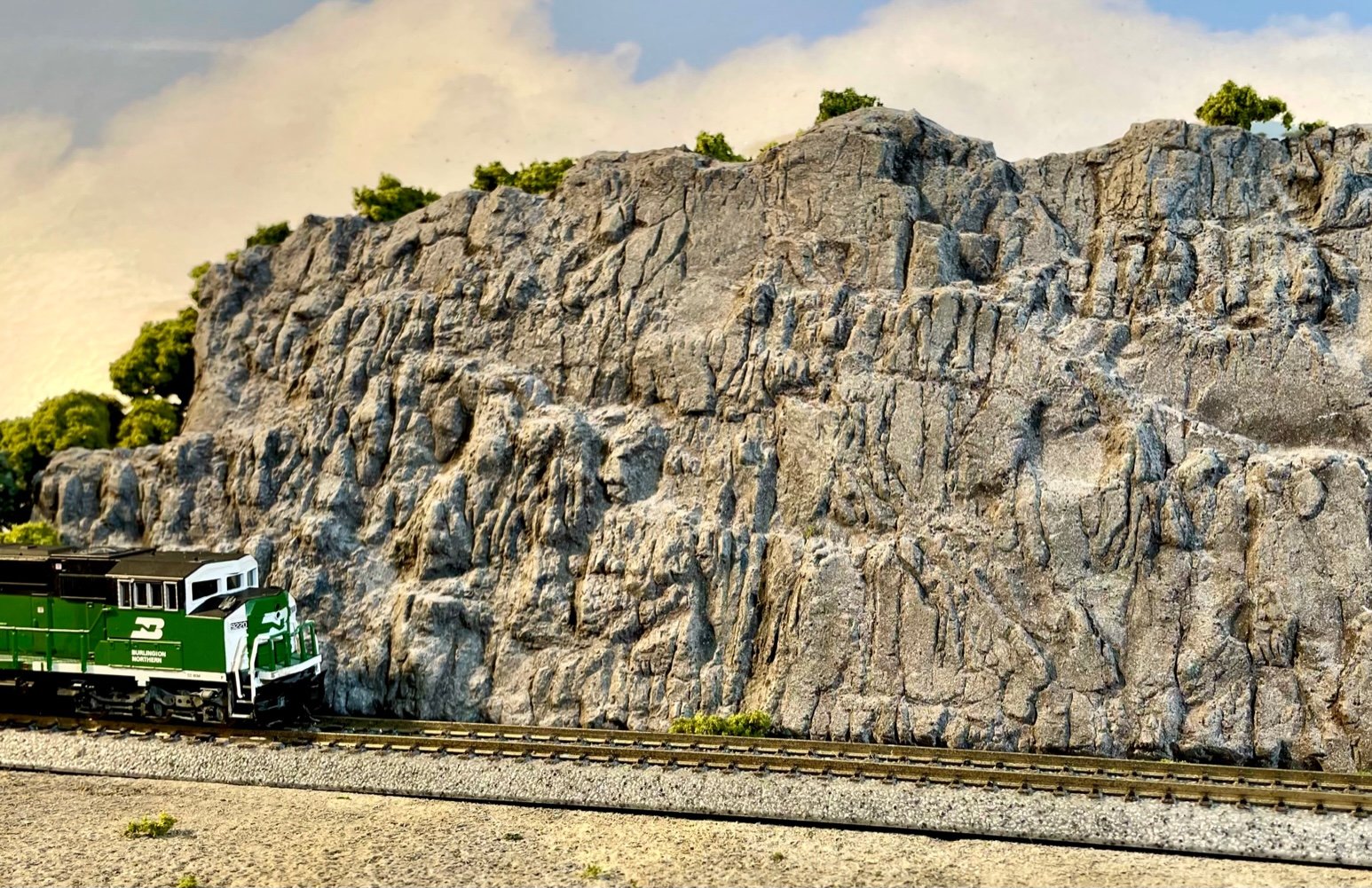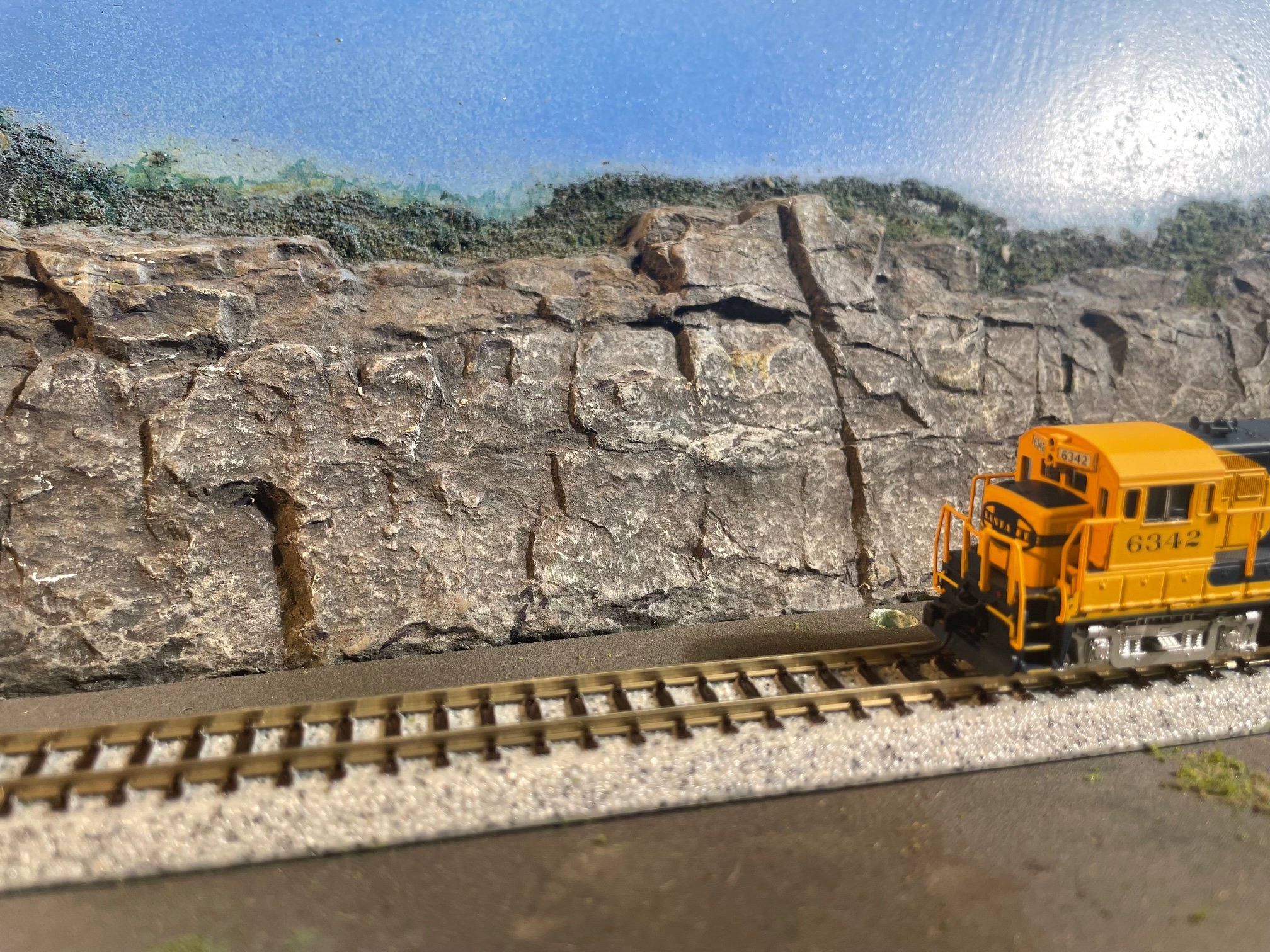Explore Our Collection of Rubber Rocks
-

Shales
What’s in a name? In this case, maybe not too much. These are our most popular rocks, which makes sense, since shales (basically hardened clay and mud) are one of the most common rock types worldwide. The central third of the continental US is basically covered with this stuff. But don’t let the name fool you—with a little bit of creative painting, they can be used to model nearly any type of bedded (layered) sedimentary rock.
Soft sedimentary rocks like this really take a beating when they’re exposed to the elements. Some of the beds will weather away faster than others, and this really brings out the layering in the rock so everybody can notice.
We offer a variety of shapes, so you can model anything from a sheer wall that just shows a trace of the rock’s layering, to rocks with more pronounced beds.
-

Rounded Beds
Some of America’s most distinctive rocks are the red sandstones, known worldwide as the common backdrops of Western Movies. Worn round and smooth by wind erosion, and often colored in rich hues of red and orange, they are widely seen as symbols of the American west.
The real world of rocks and railroads is a little more complicated than that. Although the deep red sandstones of the John Ford westerns are largely confined to the Colorado Plateau states of Colorado, Utah, New Mexico, and Arizona, similar rock shapes are common throughout the United States where sedimentary rocks are found.
Rounded Beds allows you to model any area where sedimentary beds have been rounded by wind and water. If you model the Santa Fe across New Mexico and Arizona, or the Rio Grande in Utah, these rocks are a must, colored with some shades of deep maroon or rust-red. Tone down the red shades a bit and you can model the iron rich sandstones that fed the first iron forges in Pennsylvania, or the more ordinary outcrops along the Pennsylvania RR mainline. With a bit more tan, you can do the soft sandstones and siltstones of the Badlands country in Montana and the Dakotas. Check some scenery photos for inspiration—you’ll see these same bedding shapes all over!
Like many of our larger Rubber Rocks, Rounded beds are roughly rectangular in shape. The top beds are rounded back in realistic shapes that are easy to blend into the landscape. But if you take out your scissors and cut along the low spots, you can blend an irregularly shaped piece into whatever scene you’re building. Remember to keep the pieces you trim off—you’re sure to find a use for them somewhere else.
-

Limestone
Throughout much of America, light-colored limestone cliffs and rock cuts are prominent parts of the landscape. Limestones are often harder and more resistant to erosion than other sedimentary rocks, so as nature wears away the bedrock surface, the limestone layers often stand out above their surroundings. This is particularly true in the arid areas of the American west. Limestones are often light gray to light tan in color, with a bit of yellowish to reddish weathering along the joints.
Many limestone outcrops also have bedding lines that are not quite parallel. Its common to see what we will call “wavy bedding” here, especially in limestones with a high clay content.
-
Sheer Cliffs
Intended for places where clearances are very tight, our Sheer Cliff Line packs a lot of detail into very little overall relief.
And of course, there are places where real life outcrops simply don’t have a lot of relief to begin with.
-

Quarries
Quarries and mines are some of the best traffic sources for almost any railroad. The rock faces in a quarry are fresh and angular, unlike the more weathered and rounded appearance you see on natural outcrops, or on older man-made cuts. Often, the rock is removed in successive layers, or “benches”, creating a sort of stair step appearance.
-

Basalts
Basalt is a volcanic rock, often found in large deposits where dark lava has spread widely over the land surface. Once those lava flows cool, they often form a pattern of vertical cracks and joints that are really obvious to the eye. Probably the best known basalt flows in the US are in the Columbia River country in central Washington and Oregon. Have you ever driven down the Columbia River Gorge, or ridden through on Amtrack? That’s all basalt you’re looking at. Smaller basalt flows are common in Arizona and New Mexico along the former Santa Fe (now BNSF) transcon mainline.
-

Santa Fe Canyon
Everything else on our site is organized either by rock type or by appearance, so what’s going on with these two Rubber Rocks?
Well, back in the late 1990s, when we first started collecting molds off of rock faces, one of the first places we got good molds was from a location called Santa Fe Canyon. Somehow, the name has stuck, the pieces have sold well, and we’ve never come up with a better name. We must be doing something right, because they’ve sold well now for over 30 years.
-

Granite
Granite is one of the most common rock types on the earth’s land surface. For reasons we won’t get into here, they are particularly common in the core of major mountain ranges. That includes the Appalachians, the Rockies, and the Sierra Nevada ranges in the US, and a whole bunch of places across Canada as well.
Left on their own to weather naturally, granites will often take on an appearance of more or less random, rounded blobs sticking out of the ground. That’s what our Granite product line is intended for. Once the railroad builders came through, the cuts they made into the granite produced fresh, unweathered rock surfaces that are quite a bit more angular in appearance. Check out our Blocky Rock and Santa Fe Canyon pieces to model that. It’s easy to combine them to make a really realistic looking landscape!
-

Blocky Rocks
Don’t let all this talk about geologic details fool you: sometimes, when you look at a rock outcrop, you can’t readily tell what kind of rock it is. Sometimes, what you see at first is mostly just shapes.
In many cases, those shapes will be simple, more or less rectangular blocks. Even in places where the weathered, natural rock surfaces have lots of interesting detail, right next to the tracks where the rocks have been cut for construction, the resulting surface will look like, well, just a bunch of square blocks. In the real world, this is a good indication that the rock is quite strong, with only minimal internal fractures.
We can model this quickly and realistically with Rubber Rocks.
-
Metamorphic Rocks
Most people have heard of the phrase “plate tectonics”: basically, it’s the discovery in the 1960s that the earth’s crust is made up of plates, kind of like the shell on a hard boiled egg. These plates move around a few inches a year, and the areas where those plates rub up against each other often produce earthquakes, volcanoes, and all manner of slow motion mountain building.
Rocks that get caught up in these zones where the plates converge get squeezed, crushed, bent, and in many cases nearly melted. In the process, they get changed a lot. They end up looking quite a bit different than when they started, and we call these altered rocks “metamorphic”.
We’ll spare you the details, but let’s just say that many of America’s biggest coastal cities sit on top of rocks that have undergone these mountain building events in the past. All of the northeastern seaboard from Boston down to Washington DC is built on metamorphic rocks, and on the west coast, the rocks beneath San Francisco and Los Angeles have been very much altered as well.
The most obvious change in many cases is that previously flat-lying sedimentary rocks have been folded into arches and troughs of various sizes. Even after the intense crushing and heating they’ve undergone, the rocks will retain some traces of their original layering. Sometimes, when you look at an outcrop, you can see a single bed folded into these arches and troughs, but many other times the folds are too big for you to see all of them in one place, and you will just see one side of the arch or the other. In other places, the folding is so intense that you can see a mishmash of tiny little folds, with several visible within a few feet of each other.
Worry not, Cripplebush Valley Models allows you to model all of this stuff! You don’t even have to pay any attention to the details we described above! Let’s take a look at the product line:
-

Dirt
Look closely, and you’ll notice that not all steep cuts along railroad lines are actually cuts into bedrock. Sometimes, the builders never got deep enough to hit rock, and the steep embankment they left behind is merely soil.
But those soil banks can be interesting in their own right, and worthy of modeling. Particularly in the dry, mountainous climate of the western US, soil embankments can be quite high, and every bit as detailed as their hard rock counterparts.
-

Streambeds
Modeling the arrangements of rocks and sand at the bottom of a streambed is challenging, and almost impossible to do convincingly on the layout. We changed that.
What did we do? We built a real stream (OK, a small one in a cattle feeding trough) and ran water through it at different flow rates while we added various components like real sand, and real, rounded gravel. Eventually, we managed to produce a pattern that mimicked a full-sized stream, and we made a mold of it.
-

Special Pieces
We have also made a few pieces that don’t readily fall into the category of “rocks” or “dirt”. Take a look.

